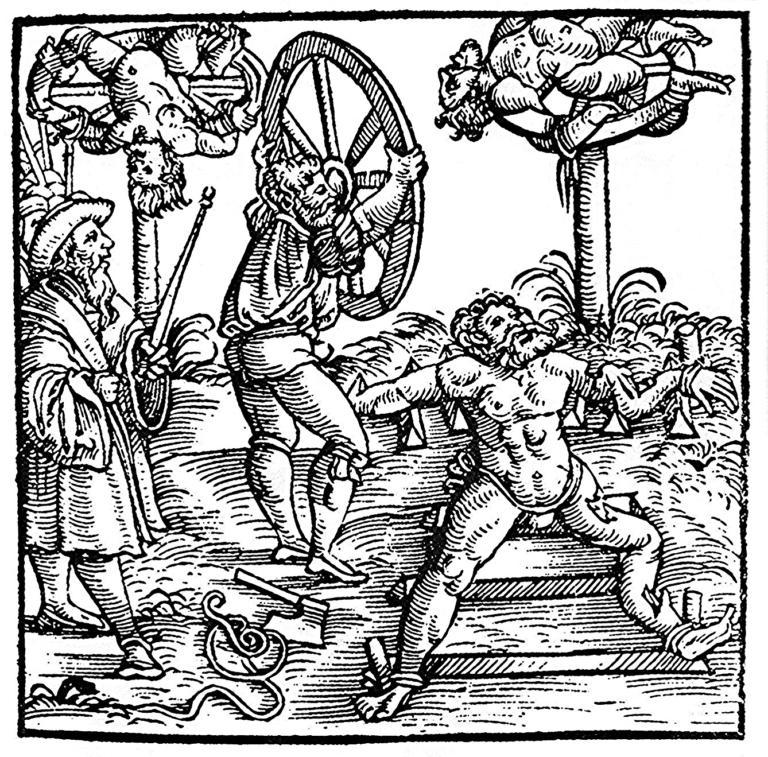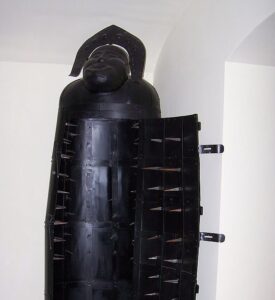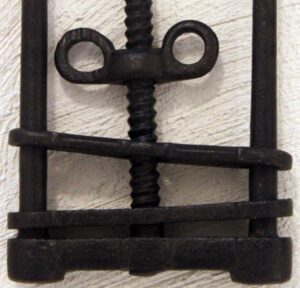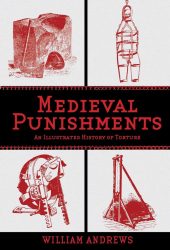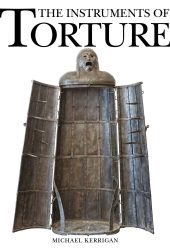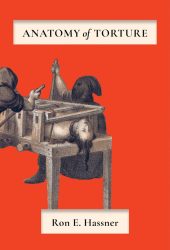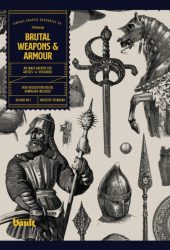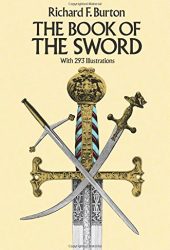
The Breaking Wheel, also known as the Catherine Wheel, was a medieval torture device used primarily for execution rather than interrogation or punishment. It was a large wooden or metal wheel with spokes, similar in appearance to a wagon wheel.
The victim would be tied to the wheel, often face down or spread-eagled, while executioners administered the punishment.
The Breaking Wheel in Medieval Times
The wheel was often used for particularly heinous crimes or as a form of punishment for traitors, murderers, or other serious offenders.
There were several methods of execution using this medieval torture device:
Breaking: The executioner would use a heavy hammer or iron bar to break the victim’s bones, typically starting with the limbs. The victim would be struck repeatedly until their bones were shattered. This method was extremely painful and often resulted in a slow and agonizing death.
Crushing: In some cases, instead of breaking the victim’s bones, the wheel would be rolled over their body, crushing their bones and causing severe internal injuries. This method was also highly painful and usually fatal.
Display: After the execution, the victim’s body might be left on the wheel, either in public view or as a warning to others. Sometimes, the wheel with the victim’s body still attached would be placed on a pole or scaffold for public display.
Was the Breaking Wheel Real?
Yes, the breaking wheel was a real medieval torture and execution device. It was used in various parts of Europe from the Middle Ages through the early modern period.
This method of execution was intended to inflict maximum pain and suffering on the victim. The breaking of bones was often accompanied by severe bruising, internal injuries, and organ damage, leading to a slow and agonizing death.
While the breaking wheel was not as widely used as some other forms of execution such as hanging or beheading, it was employed in various regions throughout medieval Europe as a punishment for serious crimes such as treason, murder, or heresy.
A Real Breaking Wheel Case:
Margaretha Beutler
One notable historical account involving the use of the breaking wheel, also known as the Catherine wheel, comes from the case of Margaretha Beutler, a Swiss woman accused of witchcraft in the 17th century. She was arrested in the small village of Mühlefluh in 1670 after being accused of practicing witchcraft and causing various misfortunes in the community.
One of the torture methods employed to extract a confession from Margaretha was the breaking wheel. She was bound to the large wooden wheel, and her limbs were stretched out along its spokes. The executioner then struck her limbs with a heavy iron bar, breaking her bones and causing immense pain. Despite the excruciating torture, Margaretha initially refused to confess to the charges of witchcraft. However, after several hours, her resistance crumbled, and she confessed to the accusations under the duress of torture. Margaretha was subsequently sentenced to death.

